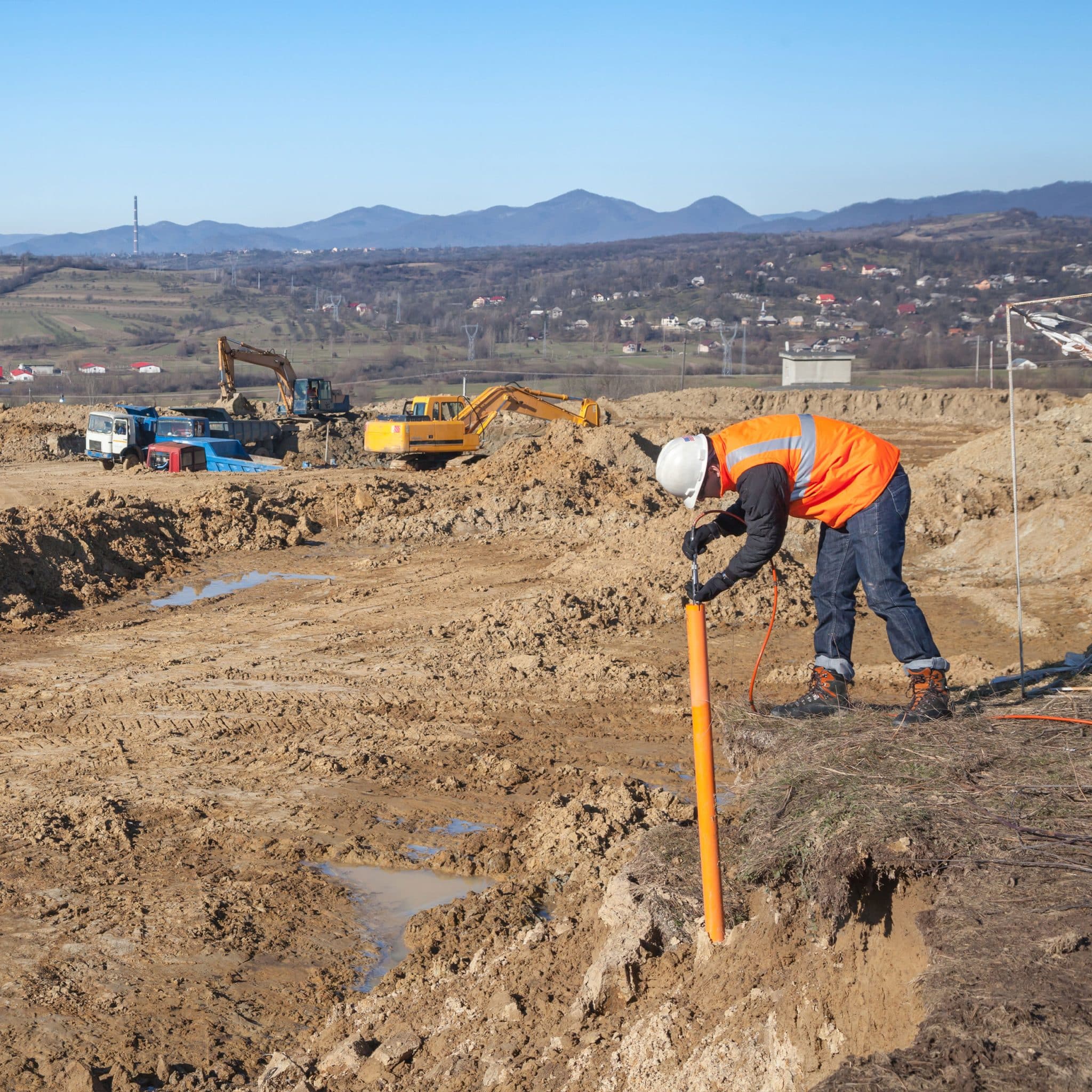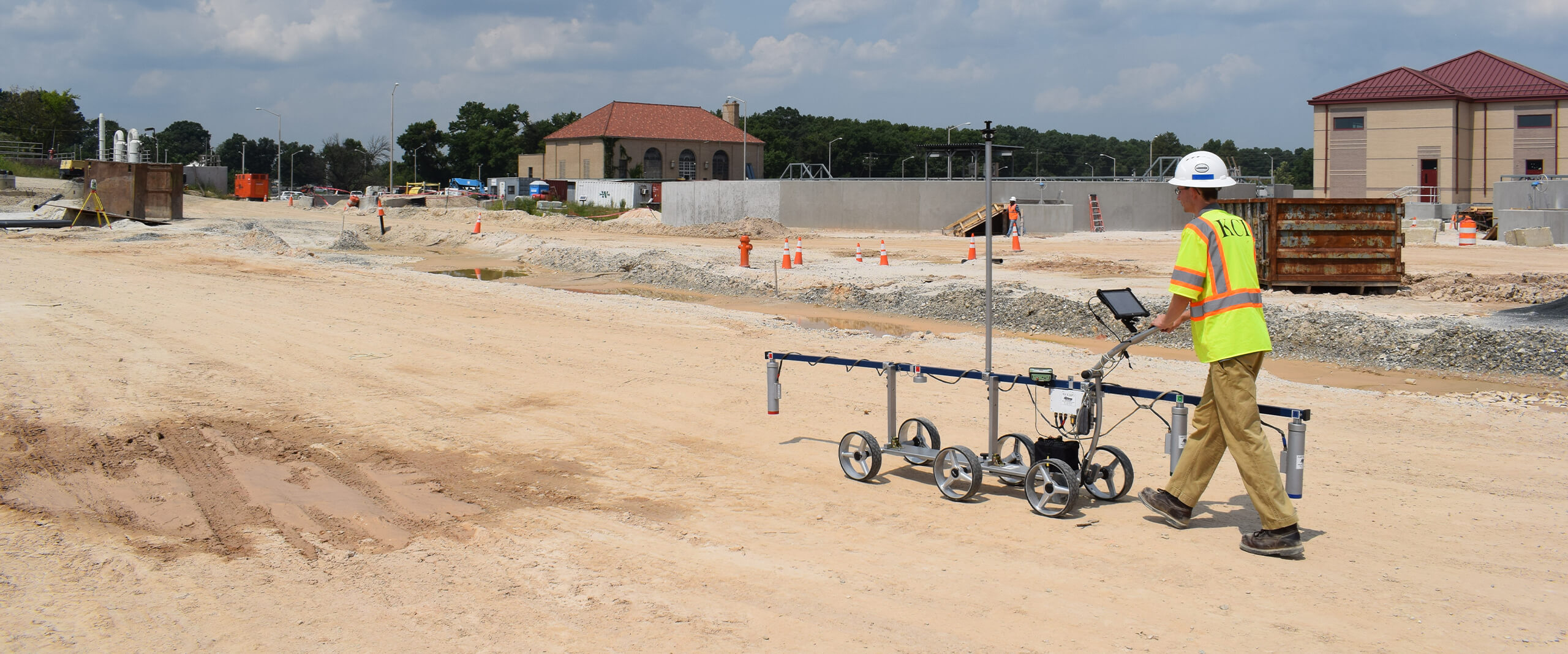Choosing the Right Geotechnical Engineers for Your Following Large-Scale Project
Choosing the Right Geotechnical Engineers for Your Following Large-Scale Project
Blog Article
Understanding the Important Duty of the Geotechnical Market in Modern Building Projects and Infrastructure Development
The geotechnical industry is a foundation of contemporary building and framework advancement, giving critical understandings into soil behavior that straight affect job results. With innovative soil evaluations and ingenious design services, geotechnical experts not only guarantee structural integrity however also address sustainability concerns amidst progressing environmental criteria. As facilities demands expand and brand-new obstacles arise, the significance of this field becomes increasingly noticeable. What effects might these advancements have for future tasks and the total safety of our constructed setting?
Importance of Dirt Evaluation
Soil evaluation plays a crucial role in the geotechnical sector, working as the foundation for educated decision-making in building jobs. Exact dirt assessment is crucial for identifying the suitability of a site for numerous sorts of structures, including household homes, commercial buildings, and bridges. By assessing dirt make-up, strength, density, and wetness web content, engineers can expect possible obstacles and alleviate threats connected with ground instability, erosion, and negotiation.
The evaluation procedure usually entails a collection of examinations and monitorings that provide essential details regarding the subsurface conditions. This information notifies the layout and building procedures, ensuring that structures are improved solid ground with sufficient assistance. Moreover, recognizing the soil account allows engineers to select ideal building and construction approaches and products, enhancing resource usage and minimizing expenses.
In enhancement to making certain structural stability, dirt assessment adds to environmental sustainability. By determining possible contamination or negative impacts on surrounding ecological communities, designers can execute methods to protect these natural deposits. In general, complete soil analysis is indispensable in the geotechnical area, underpinning the safety, efficiency, and environmental responsibility of construction projects.
Key Geotechnical Techniques
A variety of crucial geotechnical strategies are employed to improve the stability and evaluate and efficiency of building and construction websites. One fundamental approach is dirt tasting and screening, which permits engineers to determine the chemical and physical properties of the ground. This info is important for making notified decisions pertaining to structure layout and construction approaches.
One more essential strategy is site characterization, which includes the thorough evaluation of soil and rock conditions via approaches such as borehole boring and in-situ screening. Techniques like Criterion Infiltration Examinations (SPT) and Cone Infiltration Examinations (CPT) offer important information on dirt toughness and stratigraphy.
Ground enhancement methods, such as dirt stabilization and grouting, are likewise important in enhancing the load-bearing capacity of weak soils. These approaches can mitigate settlement and enhance overall site conditions.
In addition, incline security analysis is critical for determining prospective landslide dangers and making sure the security of excavations. This analysis often employs numerical modeling and limitation equilibrium methods to predict soil behavior under different conditions.
Including these geotechnical strategies right into construction planning not just optimizes job end results however likewise makes certain the long-lasting sustainability of infrastructure development.
Influence on Building And Construction Security

Moreover, effective geotechnical design includes implementing reduction strategies for identified risks. This might consist of dirt stablizing techniques, retaining structures, or drainage systems to minimize hydrostatic pressure. By attending to these factors, building teams can reduce the probability of crashes and enhance employee safety.
Furthermore, continual surveillance of website problems is vital during building. Geotechnical instruments can give real-time data concerning ground activity and stability, enabling prompt treatments when required.
Essentially, the geotechnical sector plays a crucial function in protecting building tasks. By prioritizing ground stability and using rigorous assessment methods, the geotechnical industry not just secures the labor force yet also adds to the longevity and dependability of built infrastructure.
Sustainability in Geotechnical Practices

Moreover, geotechnical engineers are currently utilizing advanced technologies, such as geosynthetics, which improve soil security while lowering the volume of see this site product required. This not just conserves sources but additionally causes less waste generation (geotechnical engineers). The assimilation of sustainable layout principles right into geotechnical engineering encourages using sustainable power resources in building and construction procedures, additionally reducing carbon exhausts
In addition, complete website assessments are vital for identifying potential ecological impacts before construction starts. By performing these evaluations, geotechnical experts can develop strategies that mitigate adverse effects, guaranteeing conformity with ecological guidelines. In general, the focus on sustainability within geotechnical methods not only adds to the longevity and resilience of infrastructure yet also promotes an accountable strategy to land and source administration. This dedication is important for promoting sustainable advancement in the contemporary building and construction landscape.
Future Trends in Geotechnical Design
Technology is driving the future of geotechnical engineering, as emerging approaches and innovations improve the industry. The assimilation of innovative data analytics and expert system is readied to revolutionize site examination and threat assessment, enabling designers to make more informed choices based on real-time data. Furthermore, using geosynthetic materials is gaining grip, providing sustainable services that boost soil stability and reduce environmental effect.
An additional considerable pattern is the adoption of automated and robot systems for tracking and building and construction processes. These innovations not only boost accuracy however likewise boost safety by minimizing human involvement in harmful atmospheres. In addition, the execution of Building Info Modeling (BIM) in geotechnical design promotes improved collaboration among stakeholders, maximizing job distribution and minimizing costs.
As environment modification postures brand-new challenges, official statement the sector is increasingly concentrating on durability and versatility in style practices, guaranteeing infrastructure can stand up to severe weather occasions. Finally, the recurring fad toward sustainability will certainly drive advancement in green products and methods, straightening geotechnical design with more comprehensive ecological objectives. Collectively, these patterns will certainly shape an extra effective, sustainable, and resilient geotechnical landscape for future projects.
Verdict

The geotechnical sector is a cornerstone of modern building and facilities advancement, giving essential insights right into dirt behavior that straight affect task outcomes. tailings engineer.Dirt assessment plays a crucial role in the geotechnical industry, offering as the foundation for informed decision-making in building tasks. In general, detailed dirt evaluation is indispensable in the geotechnical area, underpinning the safety, performance, and ecological responsibility of construction jobs
Building safety and security is dramatically influenced by geotechnical techniques, as the stability and honesty of the ground straight affect the overall safety and security of a construction website.In verdict, the geotechnical industry is indispensable in modern-day construction and infrastructure growth, providing crucial analyses that make sure architectural stability and security.
Report this page